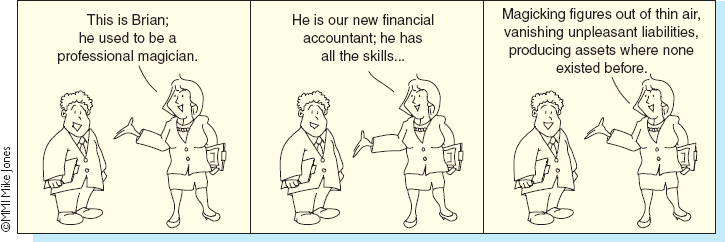Chapter 13
Creative accounting
‘Every company in the country is fiddling its profits. Every set of published accounts is based on books which have been gently cooked or completely roasted. The figures which are fed twice a year to the investing public have all been changed to protect the guilty. It is the biggest con trick since the Trojan Horse.’
Ian Griffiths (1986), Creative Accounting, Sidgwick and Jackson p. 1.

Learning Outcomes
After completing this chapter you should be able to:
- Explain the nature of creative accounting.
- Outline the managerial incentives for creative accounting.
- Demonstrate some common methods of creative accounting.
- Understand the real-life relevance of creative accounting.
 Go online to discover the extra features for this chapter at www.wiley.com/college/jones
Go online to discover the extra features for this chapter at www.wiley.com/college/jones
Chapter Summary
- Creative accounting involves managers using the flexibility within accounting to serve their own interests.
- The regulatory framework tries to ensure that accounts correspond to economic reality.
- Management will indulge in creative accounting, inter alia, to flatter profits, smooth profits or manage gearing.
- Revenue, inventories, depreciation, interest payable, and brands can all be managed creatively.
- In extreme cases, such as Parmalat, Polly Peck, WorldCom or Enron creative ...
Get Accounting, 3rd Edition now with the O’Reilly learning platform.
O’Reilly members experience books, live events, courses curated by job role, and more from O’Reilly and nearly 200 top publishers.

